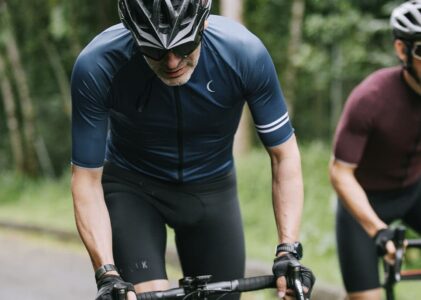The cyclist’s posture is the position of the body, including the torso, arms and legs in relation to the bike.
There are three different types of posture – low, medium and high.
The low fit is used in the most important moments of the race or in high speed races when the least resistance to the oncoming airflow is required. The position of the torso, arms, legs and head, the profile of the back are aimed at creating an elastic closed contour formed by the rider together with the bike. The pelvis is rigidly fixed in the saddle, the sway of the bicycle in transverse directions is negligible. The efficiency of the entire system tends to be at its highest.
Average landing is practiced at low speeds, when the rider can afford a small rest to the muscles of the back, neck, arms. This landing is most effective on climbs and descents. On ascents the speeds are usually low, so the resistance to the air flow is minimal and the increased oxygen consumption requires relaxing the chest muscles and ensuring freer breathing. On descents the average landing improves maneuverability, increases visibility, allows to get a short rest.
The high landing is characterized by the fact that the rider’s position becomes almost vertical, it is practiced when riding at low speeds in training, in periods of slack fighting in races or in extreme situations. The primary importance here is primarily the ability to make a maneuver and keep the bike from skidding.
Type of landing is not a constant for a rider, the landing is determined by race conditions: speed, rider’s position in the group, the need to make a quick maneuver, the acuteness of the struggle in the race. By landing a rider can save energy to reduce resistance to the air flow or give a rest to tense muscles. It all depends on the specific situation.

